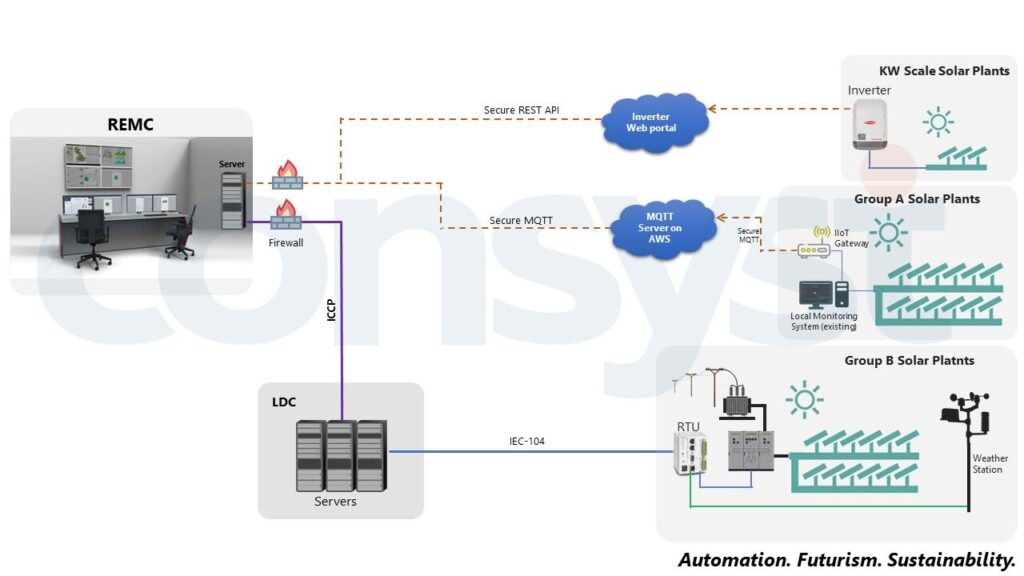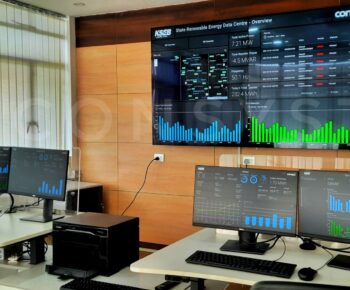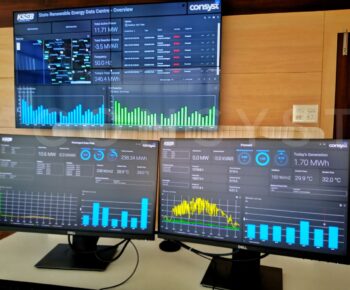End-User
Kerala State Electricity Board (KSEB), India
Scope
Design and installation of Renewable Energy Management Center (REMC) at KSEB Headquarters
Background
The Renewable Energy & Energy Savings (REES) department of KSEB is responsible to explore and develop renewable energy sources in the state of Kerala to meet the electricity demand in the future and to save electrical energy through efficiency measures and demand-side management. REES is also responsible for screening, selection, development, and implementation of innovative ideas in the renewable energy and energy savings sector from the public to mentor and handhold them to realize their projects, with the aid of innovation funds from the government and selection, research, and development of innovative ideas in solar, wind and other renewable energy power generation sector in a scale suitable for KSEBL to adopt the same.
The solar PV plants in the state are increasing day by day by number and capacity. As it is depicted this is energy for the future, clean energy, zero pollution, etc. As the number increases, it becomes important to monitor these power plants at a higher level. PV plants are associated with several parameters and conditions which affect the performance. In order to make it efficient and productive, REES wanted to implement a Renewable Energy Management Center to monitor the Solar PV Plants in the state centrally.
Challenges
There are several On-grid solar PV plants from the size of 5KW to 50MW. These plants are constructed, operated, and maintained by different contractors. The plants are built with multi-vendor products – Solar Inverters, Monitoring Systems, meters, etc. The following are some of the challenges:
- Absence of a common, centralized system for monitoring the plants
- A few plants are monitored locally using a SCADA,
- A few are monitored through the inverter web portal
- Some plants (plants with capacity>1MW) are connected to the Load Dispatch Center using RTUs
- Communication protocols used for monitoring are not standardized and different from plant to plant.
- The local monitoring systems are only accessible from the plant, and it requires a permanent operator at these plants to ensure the plants are operating well.
- Different inverters provide different web portals for monitoring the plants, so KSEB has to login to each web portal to monitor the data from different plants.
Solution
CONSYST designed and built Renewable Energy Management Center (REMC) at KSEB HQ. The REMC facilitates centralized monitoring of solar PV plants in the state on a real-time basis. The REMC has Servers, operator stations, video walls, firewalls, and other IT equipment. The IIoTNext platform plays a key role in data collection, historization and visualization. The platform has an inbuilt high-performance Historian Time-Series Database to store data. The data visualization and deeper analysis are done using interactive dashboards and reports.
The dashboards are built with smart widgets which visualize data from different sources in the required format. The interactive Geo map helps the officials to drill down and analyze data of individual plants. KSEB can also analyze critical alarms and events from the dashboards and send alerts during configured events.
The platform is accessed by KSEB officials from the operator stations and video wall installed in REMC. Additionally, the officials can log in to the platform from the computers and desktop connected to the KSEB network using login credentials. The REMC also provided the aggregated data of smaller plants (<1MW Plants) to LDC through ICCP. The plants are integrated into the REMC through three different means :
- Using IIoT Gateways: The smaller plants with local monitoring systems are connected to the REMC using an IIoT gateway. The gateway collects data from the existing local monitoring SCADA/PLC/Datalogger through communication protocols like Modbus RTU or TCP and publishes the data to an MQTT Broker through encrypted MQTT communication. The IIoTNext platform installed on REMC gets this data through MQTT Subscribe.
- Integration from LDC through ICCP: The plants which are connected to the LDC are integrated to the REMC through ICCP/TASE.2 Protocol.
- Integration of data from inverter web portal: The data from different inverter web portals are integrated to the REMC through REST APIs. Multiple inverter web portals are integrated and unified to a standard format.
System Architecture

Result
- REMC helps KSEB to analyze the performance of renewable energy generation inside the state more precisely in real-time and manage grid operations better.
- The system provides complete visibility on PV plants assets distributed within the state and forecasts the energy from renewables in the future.
- The officials get alerts when a plant is underperforming or faulty. It helps to identify the underperforming plants and take necessary maintenance actions to improve the performance and ROI.


